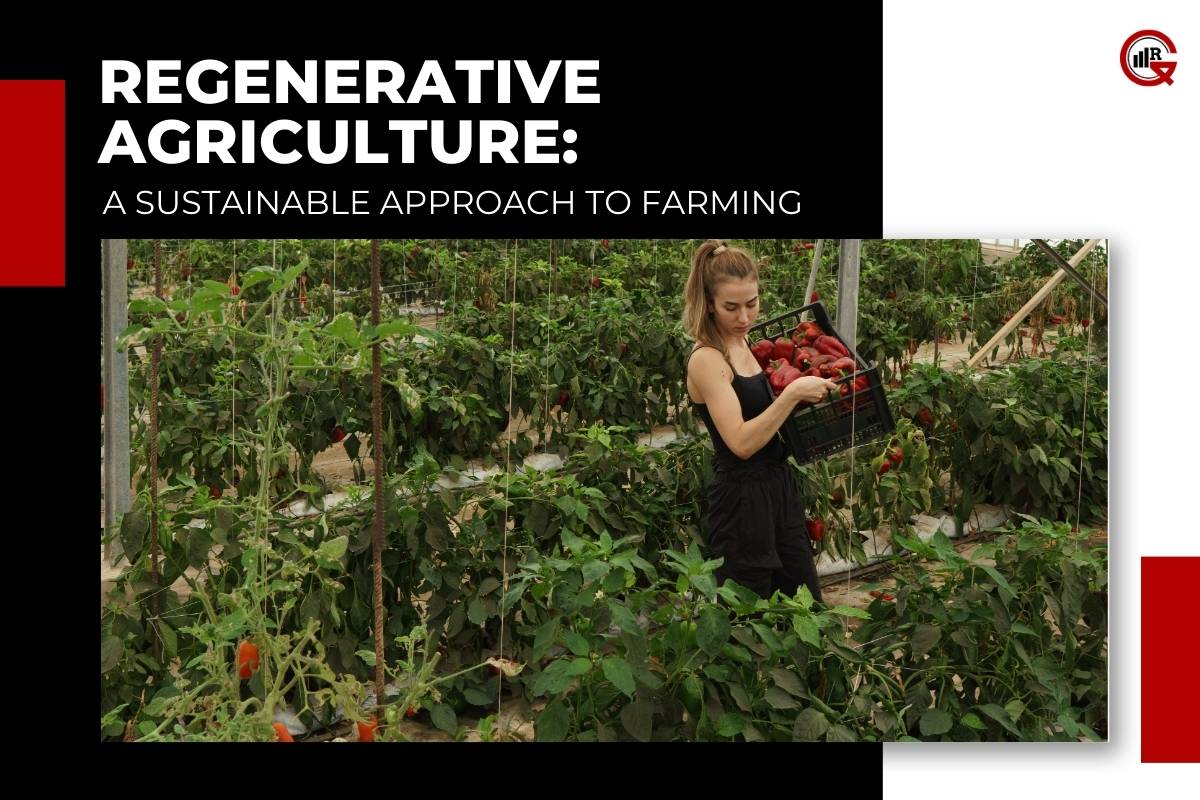Regenerative agriculture is gaining increasing attention as a sustainable and environmentally friendly approach to farming. Unlike conventional farming practices that focus solely on maximizing yields and profitability, regenerative farming emphasizes soil health, biodiversity, and ecosystem resilience. In this article, we will explore the principles, benefits, challenges, and potential of regenerative agriculture in addressing global food security, climate change, and environmental degradation.
Principles of Regenerative Agriculture:
This type of agriculture is guided by several key principles aimed at restoring and enhancing the health of agroecosystems while minimizing negative environmental impacts. These principles include:
Soil Health: Regenerative agriculture prioritizes the health and vitality of soil as the foundation of agricultural productivity. Practices such as minimal tillage, cover cropping, crop rotation, and composting are employed to improve soil structure, fertility, and microbial activity.
Biodiversity: Diversity is encouraged in both crop and animal species to enhance ecosystem resilience, pest and disease resistance, and nutrient cycling. Polyculture and agroforestry systems are utilized to mimic natural ecosystems and promote biodiversity on farms.
Water Management: Efficient water management techniques, such as rainwater harvesting, irrigation optimization, and soil moisture conservation, are implemented to reduce water consumption, prevent soil erosion, and mitigate drought and flooding risks.

Carbon Sequestration: Regenerative agriculture practices aim to sequester carbon dioxide from the atmosphere and store it in the soil through techniques such as agroforestry, rotational grazing, and the use of cover crops. This helps mitigate climate change by reducing greenhouse gas emissions and enhancing carbon sinks in agricultural landscapes.
Holistic Management: Regenerative farmers adopt holistic management approaches that consider the interconnectedness of soil, plants, animals, and humans within agroecosystems. This holistic approach emphasizes collaboration with nature, adaptive management, and continuous improvement.
Benefits of Regenerative Farming:
Regenerative agriculture offers a range of benefits for farmers, consumers, and the environment, including:
Improved Soil Health: By enhancing soil fertility, structure, and organic matter content, regenerative farming improves soil health and productivity, leading to higher crop yields, reduced erosion, and better water retention.
Increased Biodiversity: Regenerative practices promote biodiversity on farms, supporting pollinators, beneficial insects, and wildlife habitats. Diverse ecosystems are more resilient to pests, diseases, and environmental stresses, reducing the need for synthetic pesticides and fertilizers.
Climate Resilience: Through carbon sequestration and reduced greenhouse gas emissions, regenerative agriculture helps mitigate climate change and build resilience to extreme weather events such as droughts, floods, and heatwaves.
Enhanced Nutritional Quality: Studies have shown that regeneratively grown crops and livestock products may have higher nutritional content, including vitamins, minerals, and antioxidants, compared to conventionally produced foods.
Sustainable Livelihoods: Regenerative agriculture offers economic opportunities for smallholder farmers, rural communities, and indigenous peoples by promoting diversified and locally adapted farming systems, value-added products, and direct marketing channels.
Challenges and Considerations:

While regenerative agriculture holds great promise for sustainable food production, it also faces several challenges and considerations, including:
Knowledge and Education: Adopting regenerative practices requires education, training, and technical assistance for farmers to understand the principles and techniques involved. Extension services, farmer-to-farmer networks, and demonstration projects can help disseminate knowledge and best practices.
Investment and Infrastructure: Transitioning to regenerative farming may require initial investments in equipment, infrastructure, and resources, which can be a barrier for small-scale farmers and resource-limited regions. Access to finance, incentives, and supportive policies can facilitate adoption and investment in regenerative practices.
Market Access and Consumer Awareness: Building market demand for regeneratively produced foods and products requires consumer education, labeling, and certification schemes that communicate the environmental, social, and health benefits of regenerative agriculture. Strengthening local and regional food systems can also improve market access for regenerative farmers.
Policy and Governance: Regulatory frameworks, agricultural policies, and land tenure systems may need to be reformed to incentivize and support regenerative farming practices. Governments can play a crucial role in providing subsidies, incentives, and technical assistance to promote sustainable land management and agroecological farming methods.
Social Equity: Regenerative agriculture emphasizes equitable access to resources, knowledge, and opportunities for all farmers, including smallholders, women, youth, and marginalized communities. By promoting inclusive and participatory decision-making processes, regenerative farming contributes to social cohesion, community empowerment, and rural development.
Resilient Food Systems: Regenerative farming fosters resilient and diversified food systems that can adapt to changing environmental conditions, market dynamics, and societal needs. By promoting locally adapted crops, heritage breeds, and indigenous knowledge, regenerative agriculture enhances food sovereignty, cultural diversity, and food security for communities worldwide.

Ecosystem Services: Regenerative farming practices provide a wide range of ecosystem services, including pollination, water purification, carbon sequestration, and biodiversity conservation. By restoring and enhancing natural habitats, regenerative farming supports ecosystem functions and ecological balance, benefiting both agricultural landscapes and adjacent ecosystems.
Conclusion:
Regenerative agriculture offers a holistic and sustainable approach to farming that prioritizes soil health, biodiversity, and ecosystem resilience. By adopting regenerative practices, farmers can improve agricultural productivity, mitigate climate change, and enhance environmental sustainability while promoting economic livelihoods and food security for future generations. As awareness of the benefits of regenerative farming grows, concerted efforts are needed from stakeholders across the food system to support its widespread adoption and implementation on a global scale.






